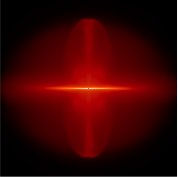

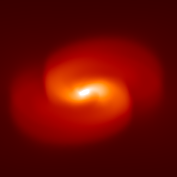
The general star formation process has been understood for nearly a half a century. First, a cloud of gas initially undergoes an isothermal collapse due to the low optical depths and the long wavelength of the radiation. As the central region becomes more dense, it begins to efficiently trap radiation, and evolves almost adiabatically producing a pressure-supported object known as the first hydrostatic core; this object has a typical radius of 5au and a few Jupiter masses. The first core continues to accrete material from its surrounding envelope until its central temperature reaches ~2000K; at this point, molecular hydrogen begins to dissociate, triggering a second collapse phase. Once the hydrogen becomes mostly atomic, a second hydrostatic core, also known as the stellar core forms; the core continues to accrete material from the remaining envelope to produce a young star.
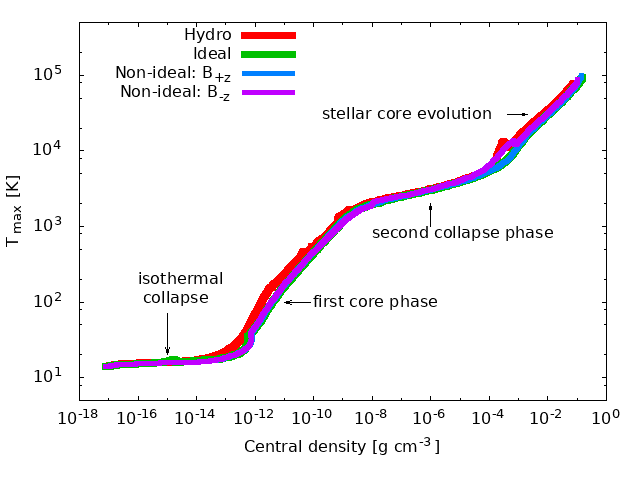
During this process, the conservation of angular momentum results in the formation of a protostellar disc, known as a Class 0 disc. When exactly this disc forms is uncertain since they are observationally challenging to observe at this phase in their life, and simulations suggest they can form as early as in the first core phase or well into the stellar core evolution phase. Outflows are also launched during the star formation process, with slow outflows typically being launched during the first core stage and fast outflows during the stellar core evolution phase.
Magnetic fields permeate star forming regions, and they act to support against gravitational collapse. Therefore, if the magnetic field strength is too strong, then the gas cannot collapse and a star cannot form! It is expected that gravity is only 2-3 times stronger than the magnetic field, suggesting that the gas will collapse, but the magnetic field will play a role in star formation.
The simplest description of magnetic fields is ideal magnetohydrodynamics (MHD), where it is assumed that the gas is mostly ionised and the ions are tied to the magnetic field; under this assumption, there is no resistivity. Realistic star forming regions are only weakly ionised, thus physical resistivity exists between charged and neutral species. The three important non-ideal MHD processes for star formation are
Ohmic resistivity: the drift between electrons and ions/neutrals; neither ions nor electrons are tied to the magnetic field,
Ambipolar diffusion: ion-neutral drift; both ions and electrons are tied to the magnetic field, and
Hall effect: ion-electron drift; only electrons are tied to the magnetic field.

Different effects or combination of effects are important during the different phases of star formation. Ohmic resistivity and ambipolar diffusion are both dissipative, and locally weaken the magnetic field and allow neutral gas to slip through the field. Compared to ideal MHD, this results in less pinched magnetic field lines and weaker magnetic field strengths in the central regions of collapsing cores, yet similar gas densities; see the following figure. The dissipative processes act on small scales, thus the magnetic fiels lines are qualitatively similar on the large scales.
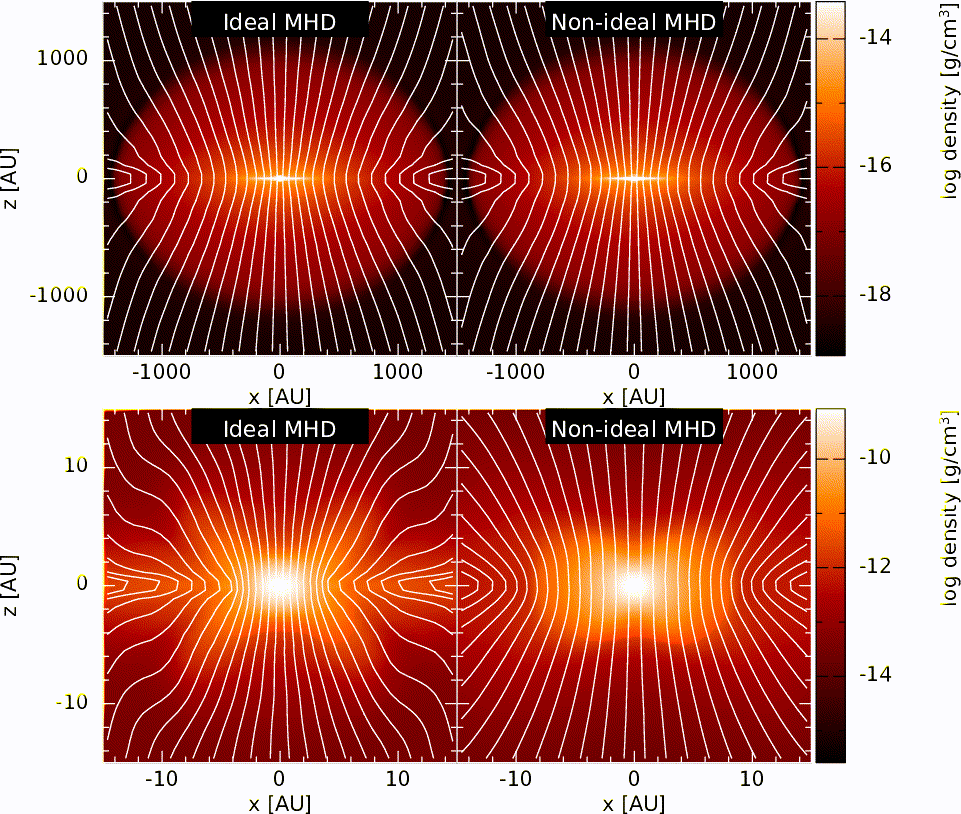
The Hall effect is dispersive and hence dependent on the initial geometry. Specifically, the Hall effect produces a drift velocity that is perpendicular to the direction of the magnetic field. If the rotational and magnetic field vectors are parallel and aligned, then this drift will be in the opposite direction to the initial rotation and hinder disc formation. If the rotational and magnetic field vectors are parallel and anti-aligned, then this drift will be in the same direction as the initial rotation and promote disc formation. See the following figure.
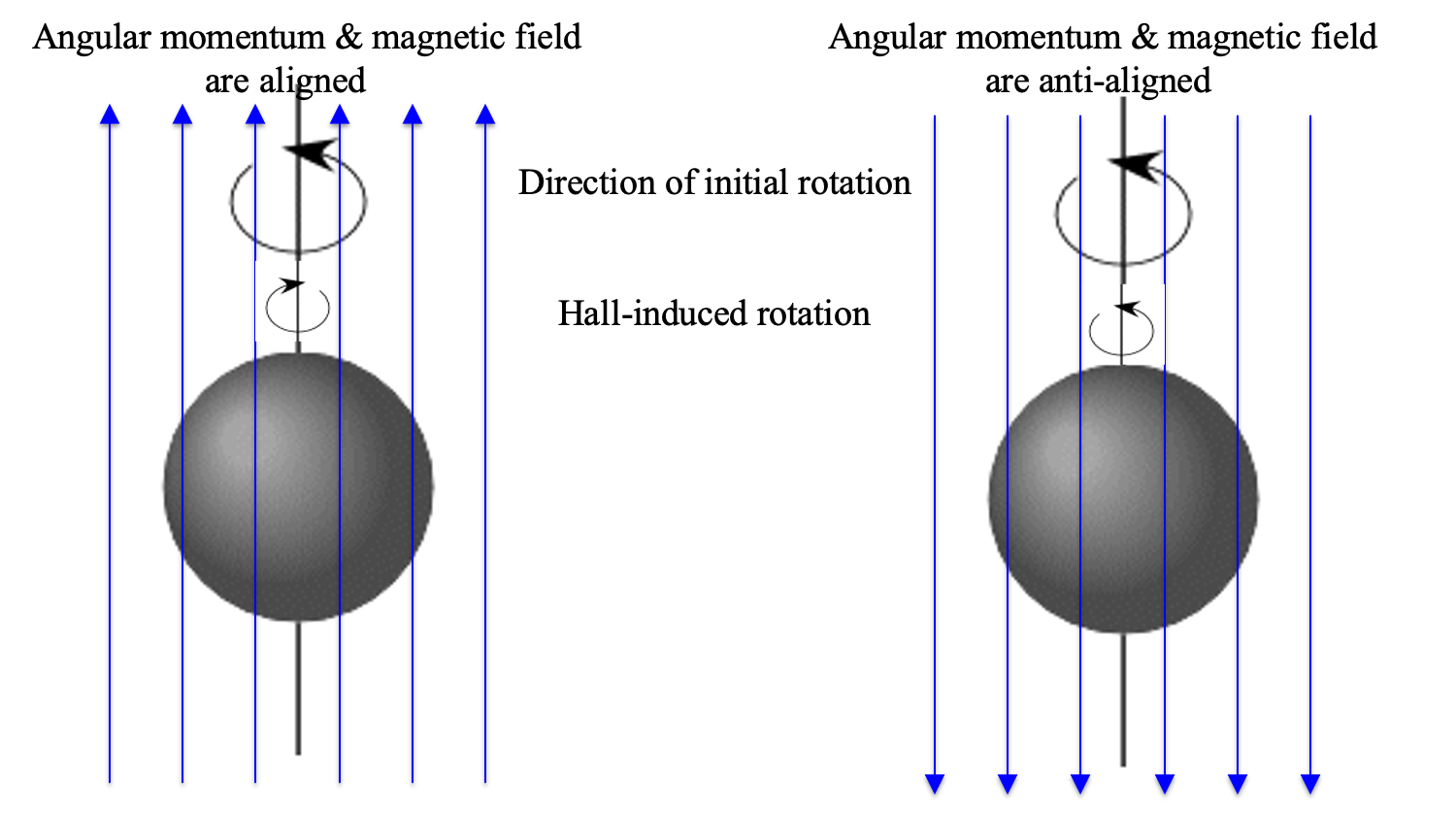
Below is a video of low-mass star formation using ideal magnetic fields, non-ideal magnetic fields with aligned magnetic field and rotation vectors, and non-ideal magnetic fields with anti-aligned vectors.
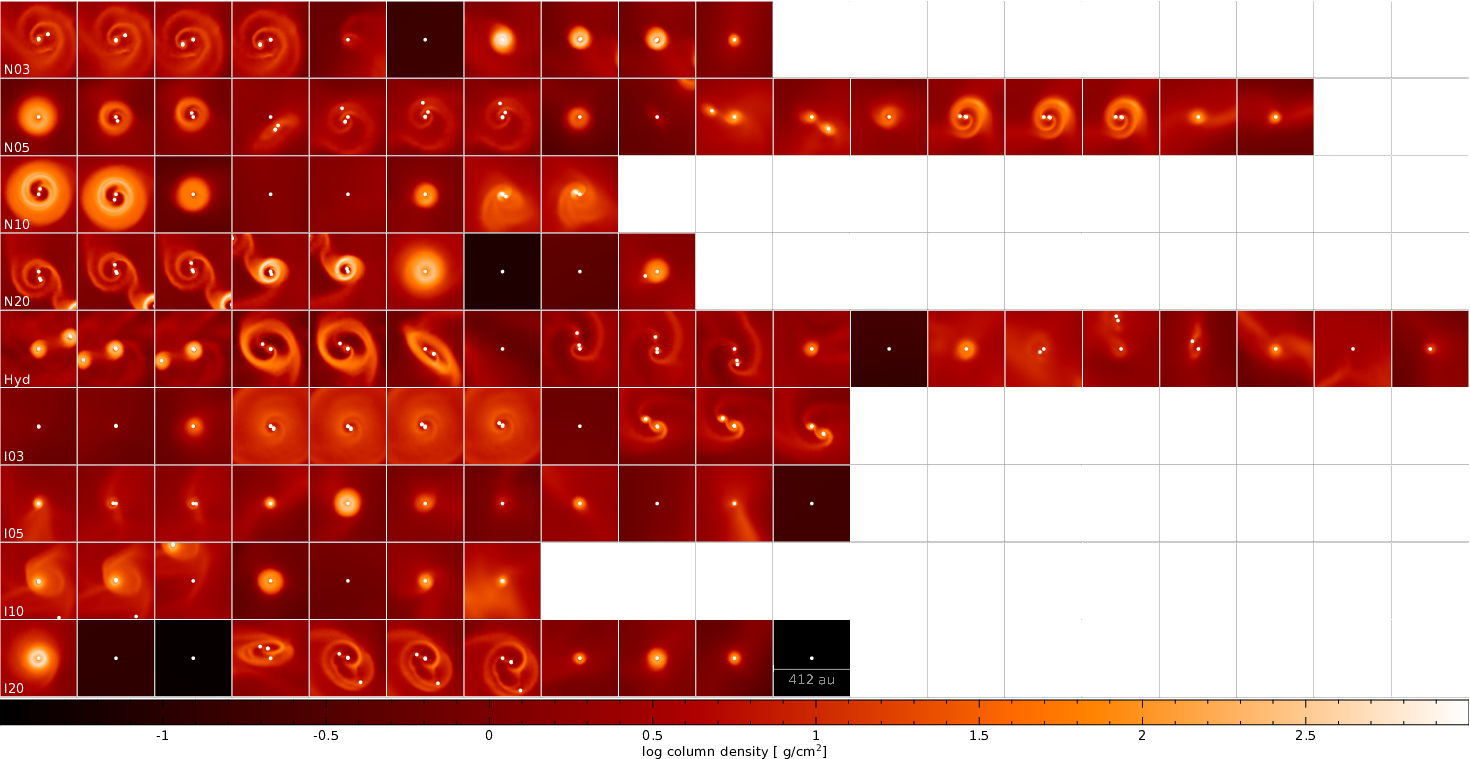
Gas column density around every star in our study; all the discs are orientated to be face-on, and the target star is placed at the centre of the frame. Each white dot represents the location of the star. Not all stars have discs, but a variety of circumstellar, circumbinary and circumsystem discs form. This suggests that there is no magnetic braking catastrophe. This is Fig. B1 of Wurster, Bate & Price (2019).
For more details, please see Wurster, Bate & Price (2019) or view the remaining videos.
In Wurster & Rowan (2023), we extracted and analysed 109 clumps, which are shown below:
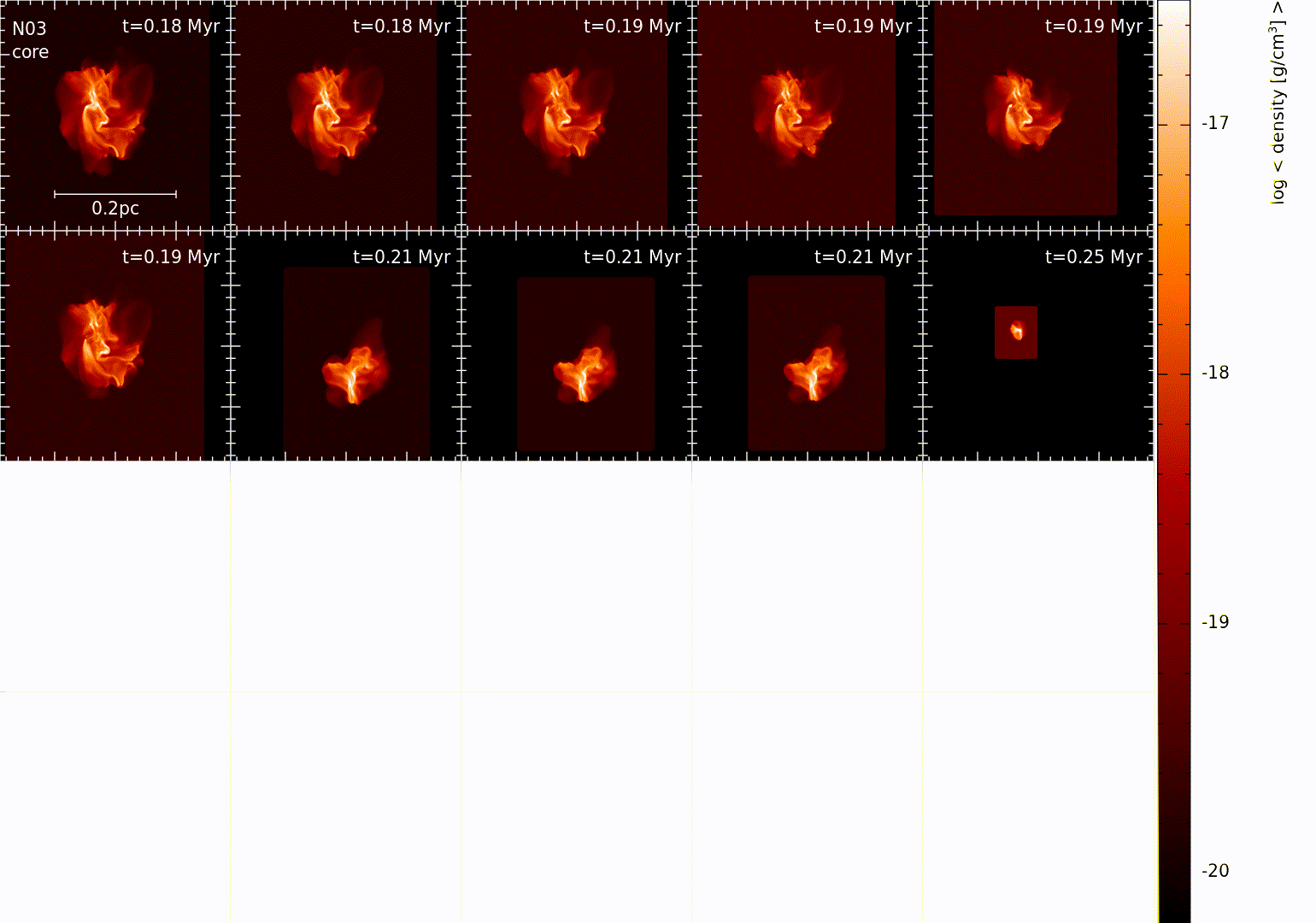
An animation of all the clumps we extracted from Wurster, Bate & Price (2019). The animation cycles through the clumps from all nine clouds, showing both the extracted clumps themselves and the parent cloud for direct comparison. For static images, click here.
We found that, within each clump, the gas density distribution was not smooth and spanned 2-4 orders of magnitude. The clump magnetic field was ordered, but not reflective of the initial magnetic field geometry of the parent cloud. In general, most clump properties had a slight trend with clump mass but were independent of (or only very weakly dependent on) the properties of the parent cloud. We concluded that stars are born from a wide variety of environments and there is not a single universal star forming clump.
In Wurster & Rowan (2024), we evolved 29 of the extracted clumps from two different cloud simulations. The evolution of the 17 clumps extracted from a model that evolved non-ideal magnetic fields are shown below:
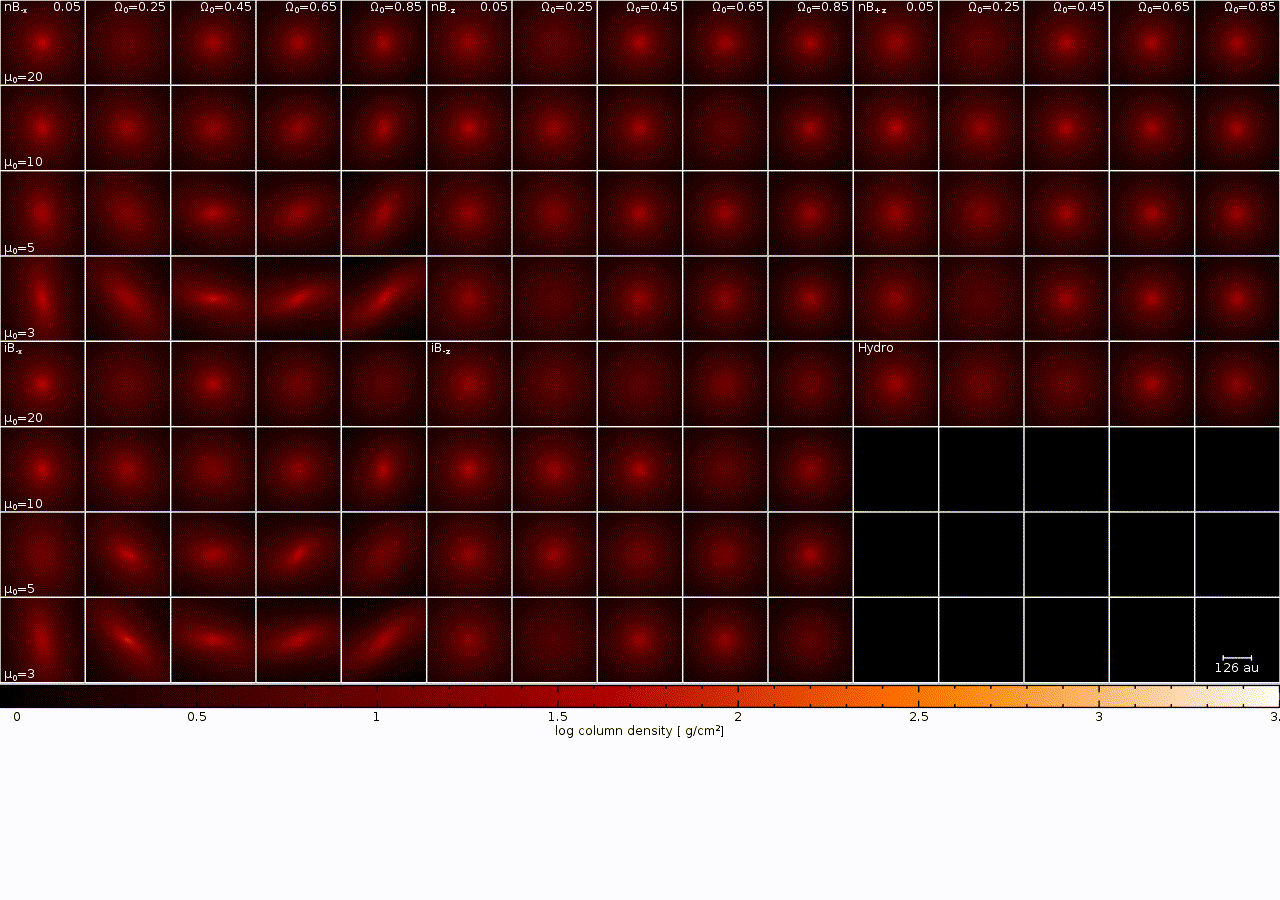
The evolution of the gas column density of each model in Wurster & Bate (2019). Frames become black at the end of the simulation. The penultimate frame shows the final data we have for each simulation. The ultimate frame shows each simulation at its end time (either when the disc dissipates, fragments, or at approximately 16kyr after the formation of the disc).
The following images show a density cross-section for models with varying cosmic ray ionisation rates at three different maximum densities. The progression from ideal MHD through reasonable ionisation rates to purely hydrodynamical is clear. Click on the image for additional plots of magnetic field strength, rotational and radial velocities.
Density slices parallel to the axis of rotation through the core of the clouds at three different maximum densities. The cosmic ray ionisation rate decreases from left to right. Blank frames indicate missing data due to computational limitations. (Click image for additional plots of magnetic field and velocity slices.)
The source code to the module is publicly available from BitBucket.org and the reference papers are Wurster (2016) and Wurster (2021). Nicil has been thoroughly tested in SPMHD codes, but is written to be platform independent, thus can also be implemented into grid codes. The following figures show the non-ideal MHD coefficients and their constituent components plotted against density and temperature. Both sets of plots use a barotropic equation of state, thus are drawn from the same data set.
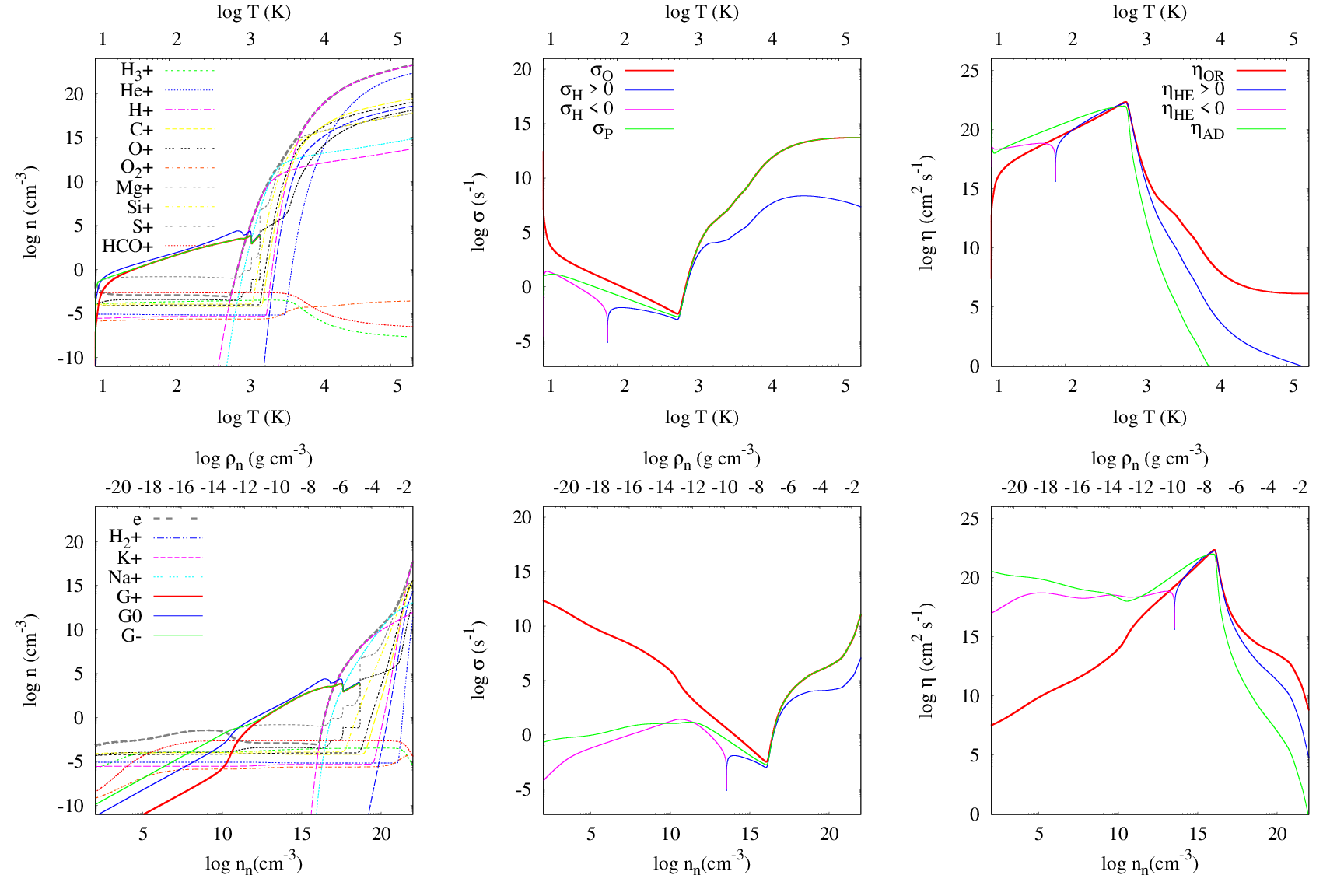
The species number densities (first column), the conductivities (second column) and the non-ideal MHD coefficients (third column) as calculated by Nicil version 2.1 using a barotropic equation of state.
The library is under continual development, so please consult modifications.pdf and IMPLEMENTATION.txt in the home directory of the repository for details of how the code has evolved from that described in Wurster (2016) and Appendix A of Wurster (2021).
This method was first published in 1977 by Lucy (1977) and Gingold & Monaghan (1977). Since then, it has been greatly modified to incorporate new physics, and is now used not only in world-leading astrophysical studies, but also widely used in engineering and the entertainment industry.
The following may be useful resources:
My presentations include several videos and animations that do not display on these slides.